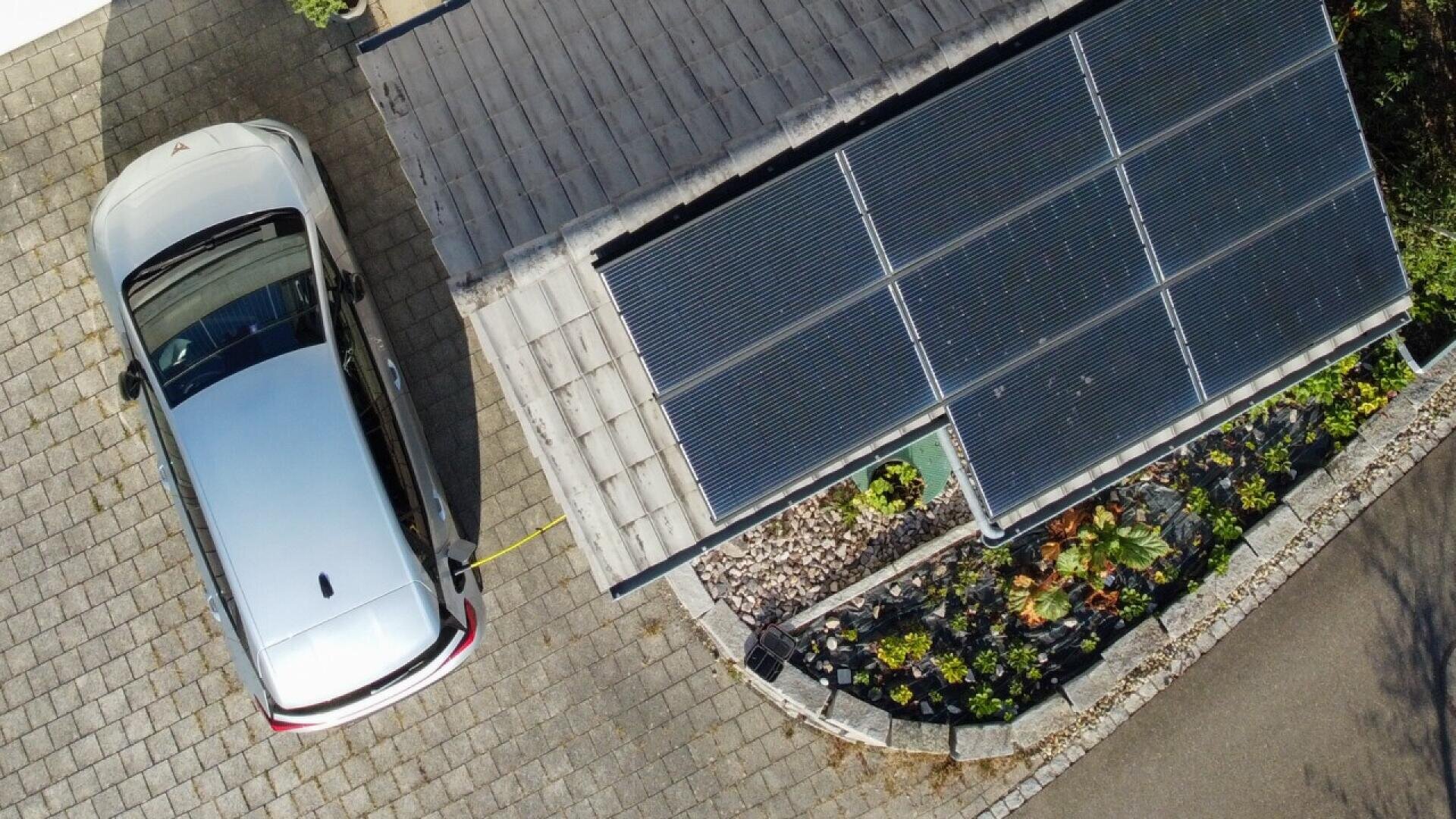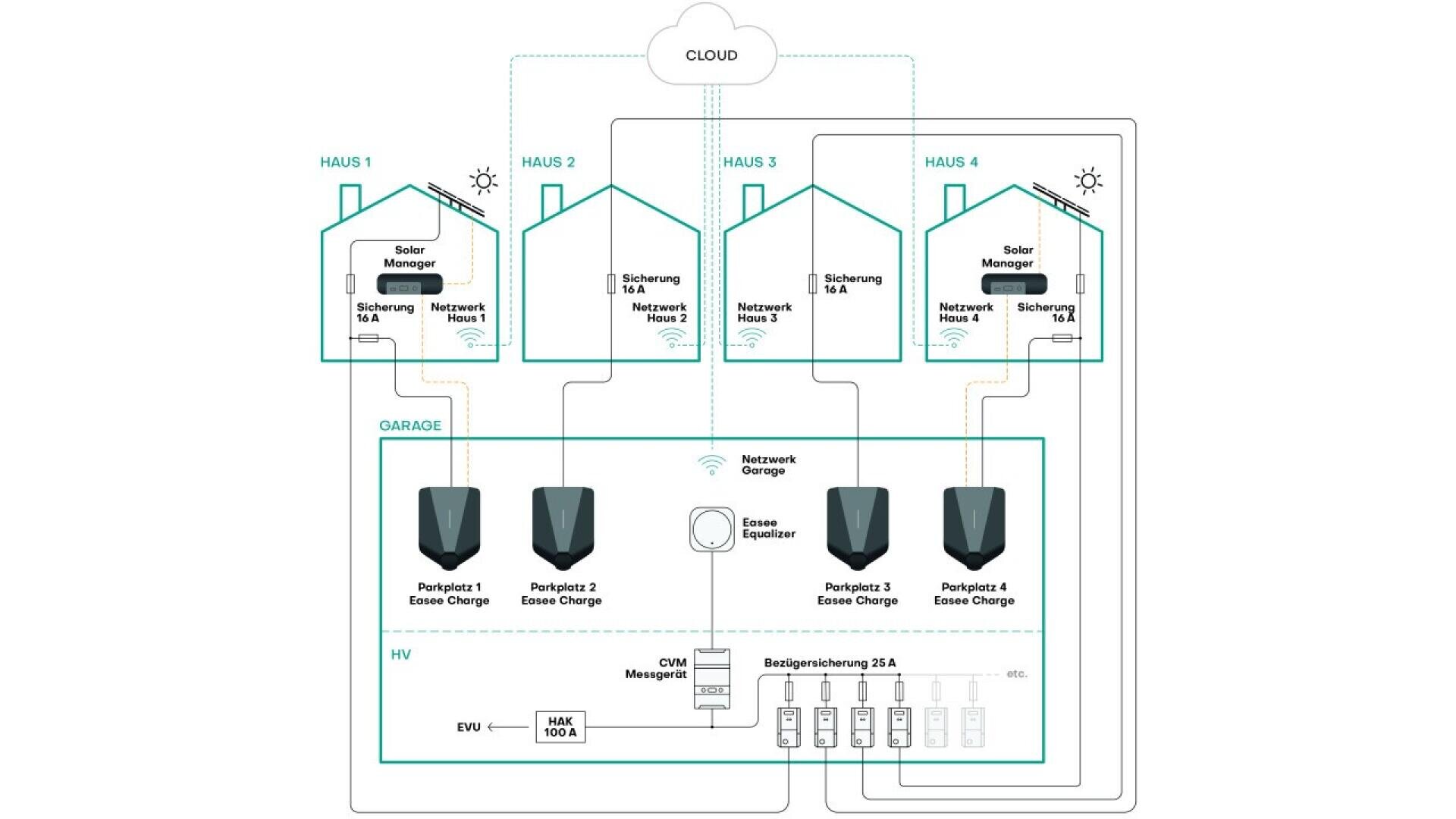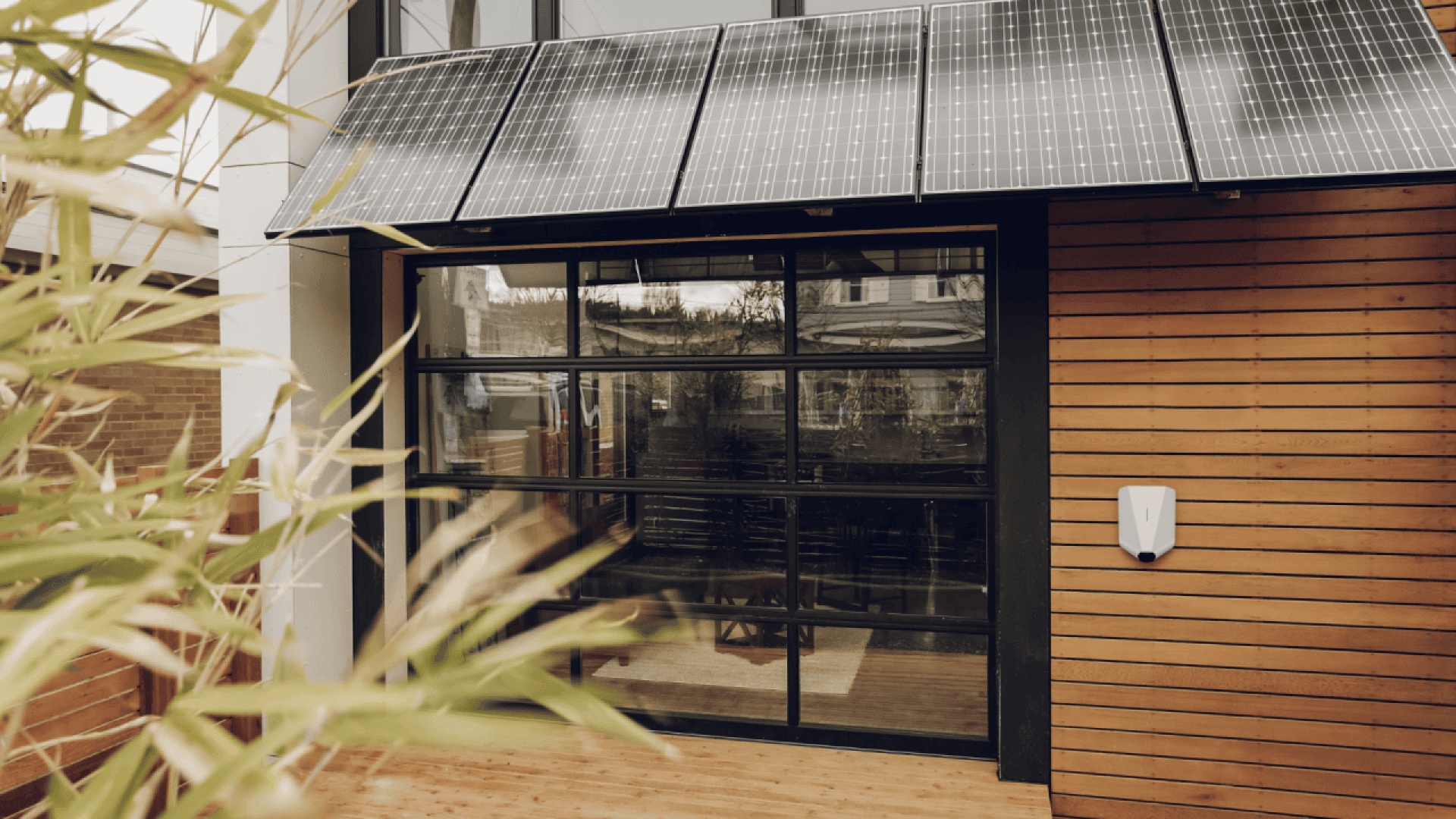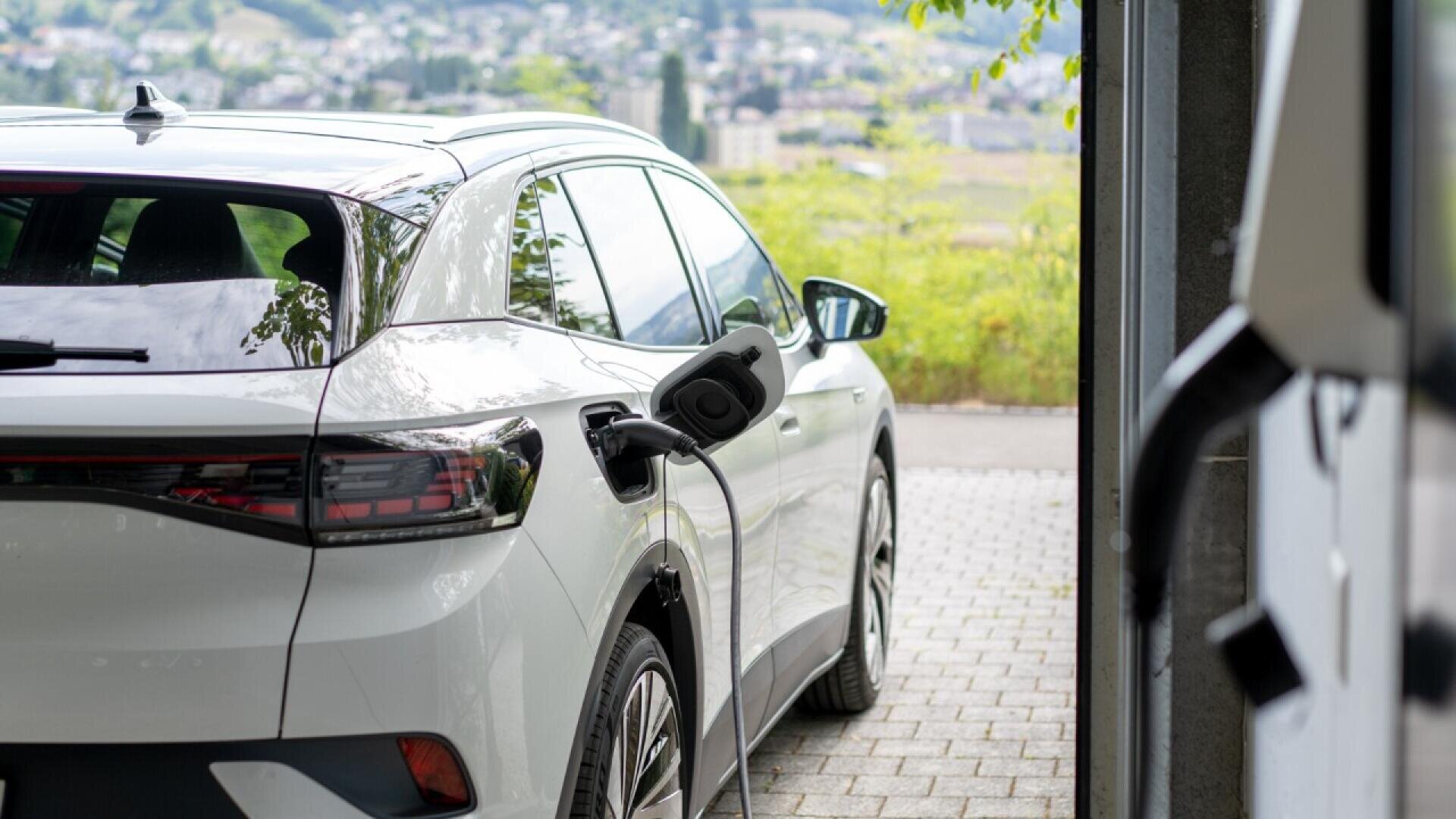PV Surplus Charging: Onwards with Solar Power!
Soon to be as legendary as Mario and Luigi? Probably not quite, but e-mobility and photovoltaics at least have the potential to become an iconic duo of the energy transition. Why this is the case and what to consider to fully exploit the duo's advantages.
On the roofs and streets of Switzerland, something is happening! Our country is experiencing an impressive upswing in the field of renewable energies and electromobility. According to the Swissolar trade association, installed photovoltaic capacity increased by almost 40 percent in 2023, or 1500 MW compared to the previous year, reaching 6200 MW. According to statistics from the Federal Roads Office (Astra), during the same period, the number of plug-in vehicles (pure electric cars and plug-in hybrids) on Swiss roads increased by 30.1 percent. These record numbers illustrate the growing trend towards sustainable energy generation and mobility. The parallel development of the two is no coincidence.
Photovoltaics and electromobility: A match made in heaven
The Achilles' heel of photovoltaics is obviously its dependence on weather conditions. The production of PV electricity is subject to large fluctuations as it depends on sunlight. Especially in our latitudes, the range is enormous. While energy provision from the sun is lower during the winter months and less electricity can be produced, on sunny days the question arises of how to make sensible use of the surplus electricity from the PV system. Feeding excess electricity back into the grid, despite recently increased feed-in tariffs, is usually not a particularly attractive solution financially. Ideally, surplus electricity should be used within the household.
Increasing self-consumption is therefore the goal – as many consumers as possible in the household should be powered by self-produced electricity. While smaller consumers have less impact overall, larger consumers such as heat pumps, electric boilers, or electric cars offer welcome opportunities to significantly increase self-consumption and thus reduce electricity costs.
A valuable combination
Charging the electric car battery with PV electricity is a sensible idea for several reasons:
- Own mobility becomes more environmentally friendly. If the electric car can be charged with electricity from one's own roof instead of electricity from non-renewable sources, the environmental impact is optimized.
- The battery capacity of electric cars is large. So large that even the batteries of small cars far exceed the usual capacity of stationary battery storage systems for single-family homes by multiples. This makes electric car batteries predestined for storing surplus electricity from the PV system.
- The PV system is amortized more quickly. Every kilometer that can be driven with self-produced PV electricity accelerates the amortization of the PV system costs. The currently increased electricity prices further enhance this effect.
What is needed for successful interaction?
For the aforementioned duo of PV and electromobility to fully exploit its qualities, it is crucial, in addition to intelligent solar control, that a smart charging station is used, which has interfaces for communication between the charging station and solar control, enabling solar charging in the first place.
Two interfaces are central in practice: OCPP and API. The major advantage of the API interface is the ability to integrate multiple third-party systems simultaneously. This means that in addition to solar control, for example, load management and a payment service provider can also access the charging station. If the charging station only has an OCPP interface, one must choose a single system to integrate. While an OCPP interface often suffices for single-family homes, an API integration is usually the better option for charging infrastructure in underground garages, as load management and/or billing are also important in addition to solar charging.
Absolutely essential for surplus charging optimized for self-consumption is further that the charging station can switch between single-phase and three-phase charging and thus adapt its charging power to the available PV electricity. For example, Easee charging robots have such a phase switching capability and can therefore start charging with one phase at 1.4 kW already in the sunny morning hours and gradually increase the power as sunlight increases, while three-phase charging stations without phase switching can only charge with solar power from 4.2 kW onwards. Unfortunately, this means that over 2.8 kW of solar power is lost.
Solar charging for single-family homes with shared underground garages
If it is a single-family house with a PV system and its own individual garage, implementing solar charging is possible with relatively little effort. However, sometimes several single-family houses, each with their own PV system installed, share a common underground garage as well as a common main fuse, from which the power for the settlement is obtained and then distributed among the individual houses. This requires, on the one hand, a common charging management among the charging stations in the underground garage, so that there is no overload of the common connection of the houses, and on the other hand, individual charging stations should be coupled with the associated PV system.
To elegantly solve this scenario, the following is needed:
- A charging station that is connected behind the single-family house meter for the use of solar electricity, but can still be integrated into a charging management system between all charging stations in the underground garage.
- A system where the charging station in the underground garage and the associated PV system do not have to be in the same network to enable solar charging.
In this scenario as well, the Easee charging system convinces: Thanks to the cloud API, the charging station in the underground garage can easily be linked to the associated Solar Manager, although this is usually located in the network of the single-family house. Furthermore, thanks to the intelligence of the Easee system, it is possible to manage charging stations in the group and balance the load with the main fuse of the settlement, although these are installed behind the individual single-family house meters. With this setup, owners of PV systems can also charge PV-optimized in a shared underground garage and benefit from their self-produced electricity without risking tripping the main fuse or the house fuses.
Comprehensive energy management
For those who want to maximize self-consumption, it is recommended to consider the available energy management solutions, which integrate and control not only charging stations but also other consumers such as electric boilers, heat pumps, or batteries. It should be considered to choose a system that allows the control of a variety of different consumers and brands, as supported by the Solar Manager, for example, as the overall efficiency of the system is much better maximized than if multiple independent solutions work in isolation.
The car as a mobile battery storage
When considering the large storage capacity of electric car batteries, the topic of bidirectional charging inevitably comes up. The concept sounds tempting – why not simply use the much larger storage in the car instead of a stationary battery storage!? However, although there are already functional bidirectional charging solutions for home use today, they have not yet established themselves for various reasons: Necessary software interfaces are often not yet available on both the car and the charging station side, and while practically all current electric car models cannot charge bidirectionally with AC due to the lack of an inverter, in the DC range, both the charging station price and the efficiency are economically far from interesting enough.
Solar charging as the new standard
Today, electromobility and PV go hand in hand. How the development will continue in the coming years remains exciting to observe – but currently, you are witnessing in real-time a fascinating change in the energy landscape. That electromobility contributes such a large part to the energy transition would hardly have been imagined 20 years ago. However, what is becoming increasingly clear is that the charging infrastructure is gaining tremendous importance through this development. It is about to become what the Batmobile is for Batman or the overalls are for Mario: indispensable.
Three practical tips on solar charging:
- An intelligent charging station is essential for successful solar charging. (It is a prerequisite that the charging station has OCPP and/or API interfaces so that it can be integrated into third-party systems at all. Also, phase switching capability is a must: Only this way can you get the maximum out of self-produced solar electricity.)
- Optimizing self-consumption significantly accelerates the amortization of PV investments. Therefore, ideally – where appropriate – involve additional consumers in the energy management.
- Analyze the initial situation and plan ahead to avoid subsequent adjustments. Single-family houses, apartment buildings, single-family houses with shared underground garages, garage boxes, ZEV, etc. – no project is like any other. simplee is happy to support with valuable tips here.





